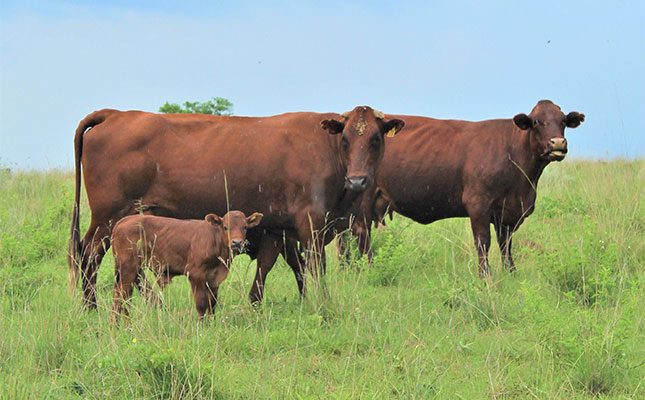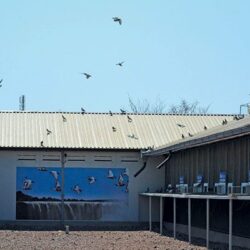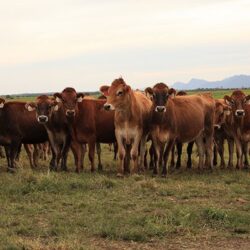In the past year, there has been quite a significant increase in interest among producers in joining the Bonsmara Cattle Breeders’ Society of South Africa, particularly from commercial and up-and-coming farmers, says Louis Steyl, CEO of the society.
However, even though the interest and financial power are there, the lack of understanding of basic herd management is the first stumbling block that farmers often face, he adds.
And while some of them might have an understanding of the concept of the Bonsmara System, they don’t all seem to understand the importance and benefit of its use. Here, Steyl explores these basic principles, and why all cattle breeders should adhere to them.
From calf to production
The collection of data and record-keeping are the cornerstones of your understanding of the direction your farming enterprise is headed. The data can be used to predict what will happen with your herd in the near future.
It can also be converted into scientific estimated production values, which gives you the ability to calculate the production and genetic potential of your entire herd, and that of each individual animal in it.
The Bonsmara System was designed to simplify record-keeping and collect only necessary data beneficial to the farmer, aiding in the establishment of the production and genetic potential of their cattle.
The sequence of record-keeping or data collection is done in a way that allows for the farmer to know more or less where their herd stands within the norms and standards of the Bonsmara society.
While herd management encompasses a broad spectrum of record-keeping, here we’ll examine the record-keeping of a cow from birth until the production stage.
Record-keeping begins when the calf takes its first breath. It is weighed and recorded, giving an indication of the average weight of calves born within the herd. This data will also provide more accurate information on the ease of calving potential provided by the bull used during mating.
Another essential dataset is collected when the calf is six to seven months old. Depending on the environment and your management practices, this is usually when the calf is being weaned, to help the farmer establish the growth estimation potential of that calf’s future offspring.
This is done by collating the calf’s pedigree data. All these records give you the scientific data that helps establish its hereditary growth potential.
Capturing the growth records of the calf post-weaning gives you an additional chance to gauge the potential growth of the animal. Within the Bonsmara System, this is usually done during a period when all the calves are going through their performance testing stage.
This allows for the compilation of data that determines the production potential of the animal, which includes growth, fertility, carcass quality, and maintenance potential of the animal. This is vital for establishing a functional and efficient profitable beef production herd.
The conclusion of performance testing usually happens before the animal reaches the production stage. With the information collected from these tests, the Bonsmara System now has enough data to give an official report on the production and genetic potential of the animal.
With this data on hand, the farmer can then request that the society send inspectors who will then do a visual inspection of all the heifers that have made it through and meet the requirements of the Bonsmara society’s breeding standards.
Health and nutrition
While the Bonsmara System does not dictate to breeders when and how to implement their health and nutrition programmes, it does encourage breeders to create and follow programmes that help keep their cattle in a healthy and sound state.
Minimising any health and nutrition hindrances in your herd affords you the opportunity and benefit of growing your herd to its full potential.
An animal that gets sick should be recorded, from the day it gets sick until the day it is well. This will enable you to monitor sickly animals and their offspring. Should they get sick often, it is recommended that you cull such animals from your herd, or they will affect the efficiency of your herd and could affect the health of your herd in the long term.
Remember that it’s cheaper to farm with animals that live longer, as you minimise the cost of the introduction of replacement heifers into your farming system/cycle. By this, I mean it is more expensive to have to replace cows in your herd every now and then compared to farming with cows that live for longer than the average or expected age for cattle.
Keeping records of bulls
While record-keeping of cows is an essential tool for measurement, it is important to note that the record-keeping of bull calves, from birth to production, is vital as their data and production potential have a much greater effect on your herd compared to that of your heifer calves.
While it’s believed that it takes years to rectify the mistake of selecting for the wrong traits in your heifers, it takes even longer to rectify the mistake of selecting for the wrong traits in a bull.
This is because while a heifer or a breeding cow only gives birth to one calf per season, a bull can sire 30-plus calves per season. This means there is a possibility of 30-plus mistakes, which usually can only be rectified by culling.
Such an act not only affects the profitability of your farming enterprise but is also a huge setback to your farming operation and the process of genetically improving your herd. You could easily have to cull an entire generation of offspring because of one fault missed when selecting your breeding bull.
In conclusion, farming for production, the genetic improvement of animals and, of course, profit, means you need to know what to do and when to do it. Otherwise, you are no different from a hobby farmer.
Precision farming requires you to know the facts and use best practices in order to make the right decisions. Whether it be financial or otherwise, you cannot make sound decisions without knowing what was measured and when. To measure is to know, thus you can only get correct results by measuring.
Let’s strive to improve our farming operations by keeping a record of all our activities on the farm. This will help us understand how our actions lead to the results we achieve and how we can make our operations more efficient, productive and profitable. By doing so, we can avoid wasting time, money and effort on untested theories.
Email Louis Steyl at info@bonsmara.co.za.




